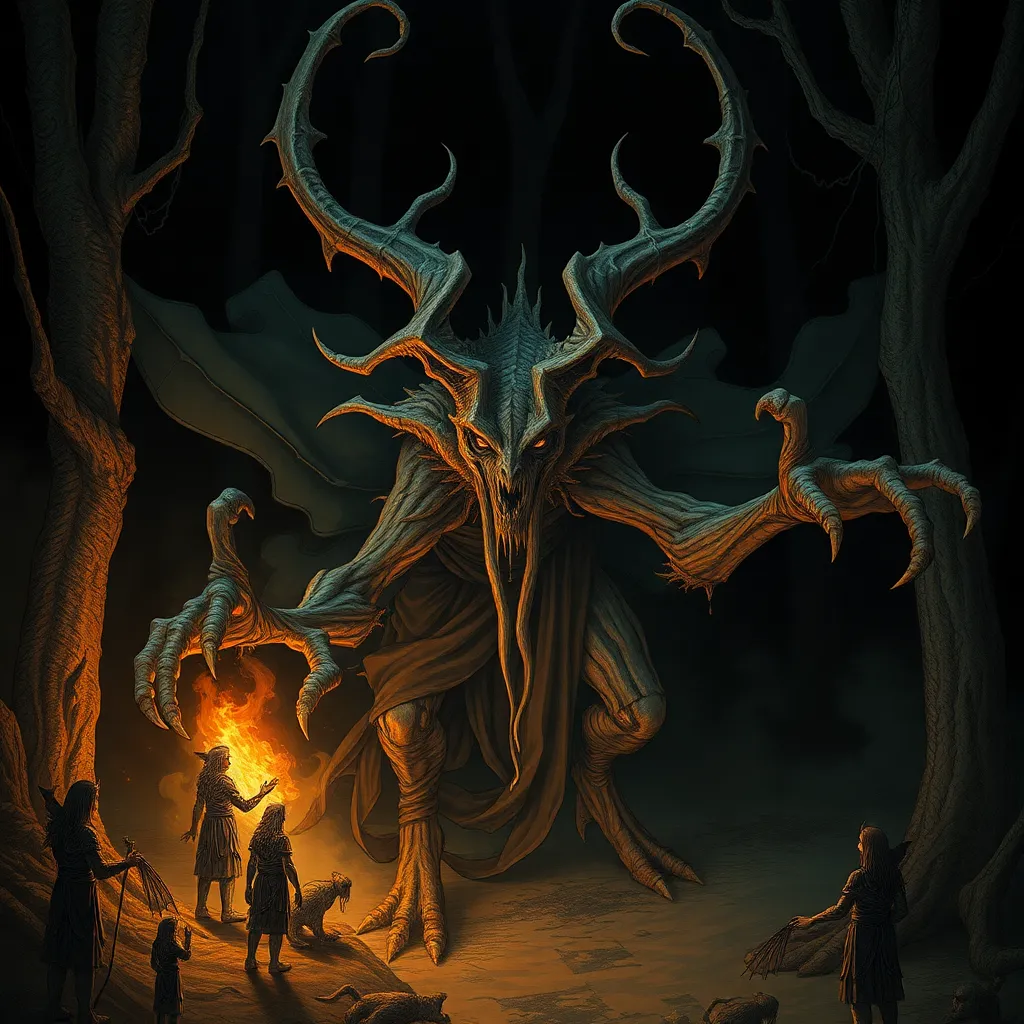A Tapestry Woven from Nature: Filipino Mythology’s Root in the Natural World
The Philippines, an archipelago of over 7,000 islands, is a land where lush landscapes, towering mountains, and vibrant seascapes intertwine. This rich natural environment has profoundly influenced the beliefs and traditions of the Filipino people, shaping their mythology into a vibrant tapestry woven from the threads of nature. In Filipino mythology, nature is not merely a backdrop but a living, breathing entity, imbued with spirits and deities that interact with humans. This intricate relationship between humans and the natural world is reflected in the stories, legends, and beliefs that have been passed down through generations.
From the ancient tales of the "diwata" (fairies) inhabiting the forest to the myths of the "kapre" (giant, cigar-smoking tree spirits), the Filipino imagination has imbued every aspect of nature with spirit. The awe-inspiring beauty and power of the natural world inspired stories of powerful gods and goddesses who resided in mountains, seas, and forests. These deities, often associated with specific natural phenomena, became the guardians and protectors of the land and its people.
Spirituality and the Elements: The Role of Nature in Filipino Religious Beliefs
Filipino spirituality is deeply entwined with the elements of nature. The belief in "anito," the spirits dwelling in natural phenomena, permeates the Filipino worldview. These "anito" could be associated with specific locations, such as mountains, rivers, trees, or even household objects. The "anito" represented the spirits of ancestors or powerful forces of nature. The people offered prayers and sacrifices to appease these spirits, seeking their favor and protection.
The elements played a crucial role in Filipino religious practices, with rituals often conducted in natural settings. Water, earth, fire, and air were not just physical elements but also powerful forces imbued with the presence of spirits. Offerings of food, flowers, and prayers were presented to the "anito" in hopes of maintaining harmony with nature. This interconnectedness between the spiritual and the natural world is a defining feature of Filipino mythology.
Animism in Filipino Mythology: Imbuing Nature with Life and Spirit
Animism, the belief that all things in nature possess a spirit or soul, is a fundamental concept in Filipino mythology. This belief extends beyond humans to encompass animals, plants, rocks, and even the elements themselves. Every aspect of the natural world is seen as alive and possessing an inherent spirit. The "anito" are not simply abstract deities but rather spirits residing in and embodying specific natural elements.
The animistic worldview permeates Filipino folklore, resulting in tales of talking animals, spirits inhabiting trees, and deities residing in mountains. These stories illustrate the deep respect Filipinos have for nature and the belief that all living things are interconnected. The animistic belief system encourages a sense of responsibility towards the environment and promotes a harmonious relationship between humans and nature.
From Mountains to Seas: The Diverse Manifestations of Nature in Filipino Myths
The Philippines' diverse landscape, from towering mountains to vast seas, provides fertile ground for a rich tapestry of mythological narratives. Each region has its own unique set of myths and legends, reflecting the specific natural features and cultural traditions of the area.
Mountain spirits, such as the "diwata" and "nuno sa punso," are frequently found in stories about the highlands. These spirits are often seen as protectors of the mountains, and their presence serves as a reminder of the importance of respecting the environment. Meanwhile, the seas are filled with stories of "sirena" (mermaids), "manananggal" (flying creatures who feast on the blood of pregnant women), and sea deities like "Maguayen" (the goddess of the sea). These myths reflect the deep connection Filipinos have with the ocean, a vital source of food and livelihood.
Nature as a Source of Power and Supernatural Ability: The Role of Spirits and Deities
In Filipino mythology, nature is not just a source of life and sustenance but also a source of power and supernatural ability. The spirits and deities associated with specific natural phenomena often bestow blessings or curses upon those who interact with them.
The "diwata," for example, are said to have the ability to grant wishes and offer protection to those who treat them with respect. However, they can also inflict harm upon those who offend them. Similarly, the "kapre" are known for their strength and magic, but they can be dangerous if provoked. These myths illustrate the potent power of nature and the need to live in harmony with the spiritual world.
The Cycle of Life and Death: Nature’s Influence on Filipino Death and Rebirth Beliefs
Filipino beliefs about death and the afterlife are deeply interwoven with nature’s rhythms. Just as the seasons change, so too does life, with death seen as a natural transition rather than an end. Nature’s cyclical nature is mirrored in the belief that the soul journeys to a spirit world, often imagined as a paradise mirroring the natural world but more beautiful and peaceful. The concept of "kaluluwa" (soul) is central to this belief. It’s believed that the "kaluluwa" detaches from the body at death and begins a journey to the spirit world.
The "kaluluwa" is often associated with the wind, believed to carry the soul away from the body. The "anito" of the ancestors, residing in nature, are thought to guide the soul on its journey. Certain trees, caves, and mountains are seen as portals to the spirit world. These beliefs inform rituals surrounding death, including the placement of offerings, the mourning period, and the final resting place. The belief that the "kaluluwa" might return to the living world, often in the form of a bird or butterfly, adds another layer to the interconnectedness between life and death.
Natural Disasters and the Supernatural: Mythological Explanations of Natural Phenomena
Filipinos have long lived in a region vulnerable to typhoons, earthquakes, and volcanic eruptions. These natural disasters, often unpredictable and powerful, became woven into their mythology, with supernatural explanations contributing to their understanding and respect for nature’s power. The myths often connect these natural phenomena to the actions of gods or spirits, serving as warnings or explanations for the unpredictable nature of the world.
For example, the myth of "Bathala," the supreme creator deity, often links earthquakes to his anger or displeasure. The eruption of volcanoes is explained in stories of vengeful spirits or deities who unleash their fury. The myths of "kapre" and "tiyanak" (a creature that preys on children) sometimes serve as warnings, linking these supernatural figures to dangerous situations, such as being alone in the forest at night or approaching a volcano. As the natural world was viewed as a reflection of the spiritual world, natural disasters became more than just natural occurrences – they were seen as signs of the gods or spirits, prompting rituals and offerings to appease them.
The Sacredness of Nature: Respect for the Environment and Natural Resources
The deep reverence for nature in Filipino mythology extends to a strong sense of responsibility for the environment. Natural elements were viewed as sacred, deserving of respect and careful stewardship. The belief that "anito" resided in trees, rivers, mountains, and forests instilled an understanding that these entities needed to be treated with care.
This belief translated into practices and customs that emphasized environmental preservation. Trees, for example, were seen as homes for spirits, making it taboo to cut down trees without purpose or permission. Rivers were considered sacred, with rituals conducted to appease the spirits residing in them, ensuring the flow of clean water. Mountains were revered as the homes of deities and powerful spirits, and climbers often paid respect to the "anito" before embarking on their journey. The interconnectedness of nature and the spiritual world fostered a sense of kinship with the environment and a responsibility to protect it.
Environmentalism and Conservation: The Legacy of Nature in Filipino Culture
Contemporary Filipino environmentalism finds its roots in the traditional beliefs and practices shaped by mythology. The awareness of the spiritual forces residing in nature and the interconnectedness of all living things contributes to the strong environmental ethic found in many Filipino communities. The belief in treating nature with respect and avoiding unnecessary harm translates into practices like sustainable farming, forest conservation, and the responsible use of natural resources.
Environmental awareness is often amplified by stories passed down through generations about how the actions of people impact the natural world. The myth of "Maria Makiling," a mountain spirit who protects the forest, serves as a reminder of the importance of preserving the environment. These myths help to bridge the gap between the traditional beliefs and the challenges of modern environmental challenges, like climate change and deforestation.
Theories on the Development of Filipino Mythological Beliefs in Relation to Nature
The origins of Filipino mythology remain a subject of ongoing study and debate. The rich natural environment, the experiences of the indigenous communities, and the influences of other cultures have all played a role in shaping their beliefs. Scholars suggest that the animistic worldview developed through close observation of nature, with the natural world providing the inspiration for stories about deities, spirits, and supernatural phenomena.
The influence of animistic beliefs from neighboring cultures, like those found in Malaysia and Indonesia, may have also contributed to the development of Filipino mythology. The belief in the interconnection of humans and nature, the importance of respecting the environment, and the reverence for the spirits of the land are shared themes across these cultures.
The process of adapting to natural disasters and the need to understand the unpredictability and power of nature may have also influenced the evolution of these beliefs. The myths, which often explain natural phenomena, served as a way for the people to understand and cope with the forces beyond their control.
FAQ
Q: What are some key elements of Filipino mythology in relation to nature?
A: Key elements include the belief in "anito" (spirits residing in nature), animism, the interconnectedness of humans and the natural world, and the reverence for specific natural elements like mountains, rivers, and forests.
Q: How does Filipino mythology influence environmentalism?
A: The deep respect for nature, the belief in the sacredness of the environment, and the stories about the consequences of disrespecting nature continue to inspire contemporary environmentalism and conservation practices.
Q: How does Filipino mythology explain natural disasters?
A: Myths often link natural disasters to the actions of deities or spirits, explaining them as signs of anger or displeasure, or as warnings to the people.
Q: What are some examples of deities or spirits associated with specific natural phenomena?
A: Examples include "Bathala" (the creator deity), "Maria Makiling" (a mountain spirit), and "Maguayen" (the goddess of the sea).
Q: How do Filipino death and rebirth beliefs reflect the role of nature?
A: The belief that the "kaluluwa" journeys to a spirit world, often imagined as a paradise mirroring the natural world, reflects the cyclical nature of life and death, as seen in the changing seasons.




